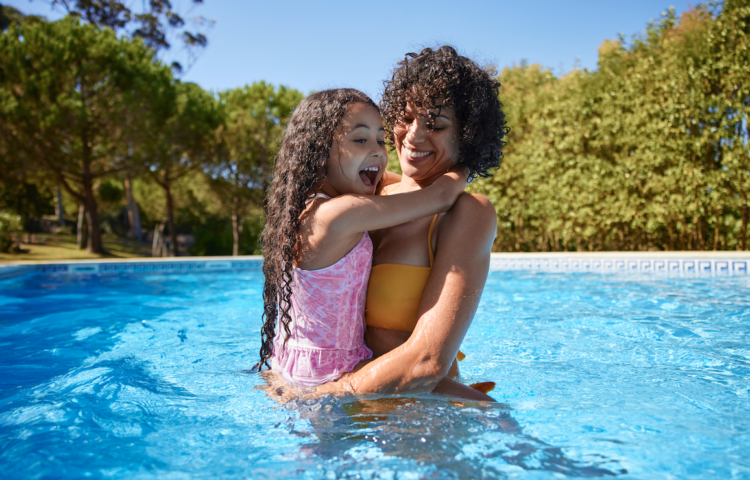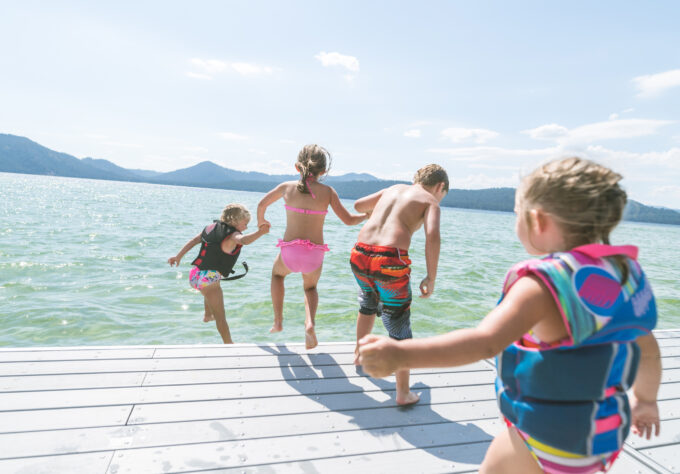The pandemic has put many children behind on swim lessons. The AAP (American Academy of Pediatrics) is alerting parents that swim lessons for children over 1 year are an important part of the layers of protection that can help prevent drownings.
So, schedule those swim lessons for your kids and use all these layers of protection to help prevent drownings:
- Water Watcher
There should always be an adult water watcher while children are in and around a pool. For young children and beginner swimmers, the water watcher should be within arm’s length. For older children who can swim, the water watcher should have their eyes on the children at all times. The water watcher should not be using a cellphone, socializing, drinking alcohol, or doing anything else that might be distracting. At a party, have adults take turns as water watcher. Even if a lifeguard is on duty, a water watcher should be there at all times.
- Fences/Alarms/Covers
All pools (including above ground pools) and hot tubs should have a fence around them with a self-closing, locked gate. Add even more protection with door and window alarms that chime when opened to alert a parent that a child is going outside (simple alarms are inexpensive and available online) and pool alarms that go off when someone enters the pool. If you can’t fence a spa or hot tub, be sure they are securely covered when you aren’t using them.
- Swim Lessons
Schedule swimming lessons for your child once they are at least 1 year old. Although swim lessons do not replace the need for a water watcher, learning to swim will make drowning less likely. Check local recreation centers, the YMCA, and look online at Red Cross for classes taught by a qualified instructor. Ask about free or reduced rate lessons. If you don’t know how to swim, consider taking lessons too.
- Learn CPR.
It can save someone’s life.
- Life Jackets
Children and adults should wear Coast Guard approved life jackets while on a boat (even if they can swim). Having the life jackets in cabinets while boating will not protect someone from drowning if they are suddenly thrown into the water. Water wings and other “floaties” do not protect children from drowning. A life jacket or “floatie” should not replace adult supervision.
- No Alcohol or Drugs
Alcohol and/or drug use increases the risk of drowning while swimming or boating. Be sure to talk to your teens about these risks. Set a good example by making sure all water watchers and boat drivers do not use alcohol or drugs.
- Home Safety
Empty all bathtubs, baby pools and water buckets after use. Put locks on bathroom doors and toilets and consider more home water safety improvements.
- Teens
Even teens who are strong swimmers are at risk of drowning. Talk to your teens about these tips and other ways to stay safe in the water.
Drowning continues to be a leading cause of death in children and teens. In young children, most of these drownings happen in home pools or hot tubs. It happens fast and is usually silent. Be sure to use all these layers of protection. You never know which one will save a child’s life.



